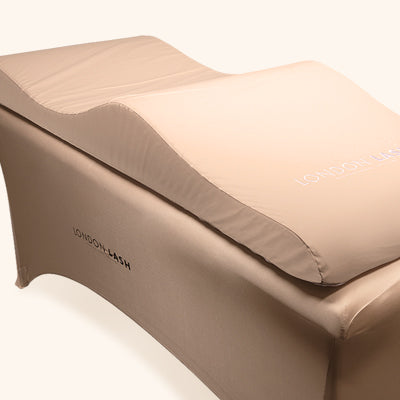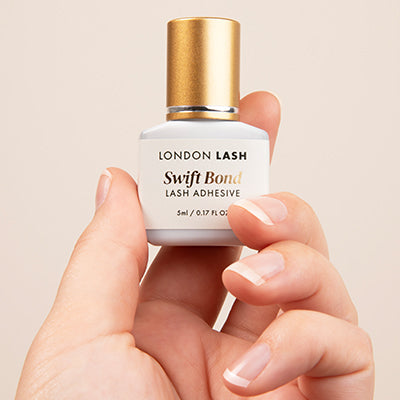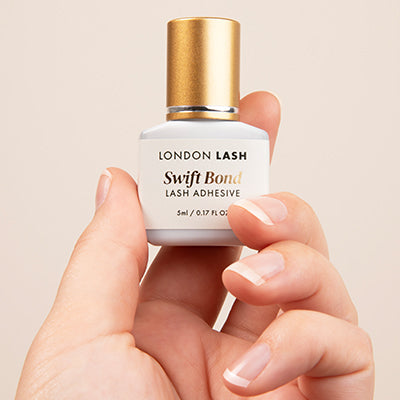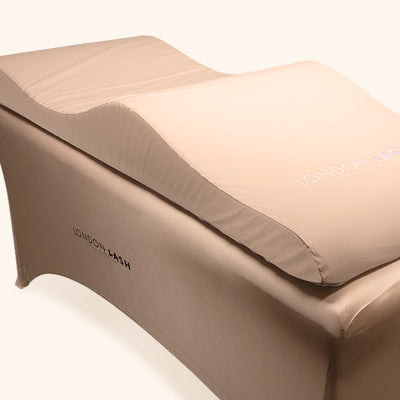FREE STANDARD SHIPPING FOR ORDERS OVER $99!
FREE STANDARD SHIPPING FOR ORDERS OVER $99!
Glues & Liquids
Lashes
Ebooks

Tips for Healthy Nails
September 06, 2023 4 min read
Tips for healthy nails: Avoiding Nail Damage
Everyone loves a gel manicure. Their long-lasting, chip-free shine has made them a favorite among nail enthusiasts. However, while they offer longevity, there's also the potential for nail damage if not done correctly. This guide will provide you with comprehensive advice on ensuring every gel manicure you do promotes nail health and in turn a great reputation for you as a Nail Technician.
What is Gel Nail Polish?
Firstly, how does gel nail polish work? The process involves applying a particular formula of nail polish that is applied and then cured under a UV or LED light. This curing process hardens the polish, ensuring it outlasts traditional nail polish. But this longevity can come at a cost if the manicure isn't applied or removed with care.

Pre-Manicure Nail Care
Before embarking on your clients’ gel manicure journey, it's crucial to ensure nails are in their best condition. Hydration is as essential for nails as it is for skin. Encourage clients to moisturize their hands and nails daily, especially the night before their appointment. Exposure to harsh chemicals such as cleaning products, can be detrimental, so wearing gloves during cleaning tasks can prevent nails from becoming brittle or discolored. Lastly, regular trimming can keep nails in optimal shape, preventing splits and cracks.
Application Tips for Nail Technicians
A flawless gel manicure that doesn't compromise nail health requires precision and care. Start by buffing the nails gently. Over-buffing can thin out the nails, making them susceptible to breakage.
When applying the gel polish, ensure it doesn't come into contact with the skin or cuticles, as this can lead to premature lifting or peeling. Always remember that the quality of products matters. Investing in high-quality gel polishes and UV/LED lamps ensures an even cure and minimizes the risk of nail damage. Many poor-quality gel nail brands can contain very harsh chemicals, which can be harmful to nail health, especially over an extended period of time. Make sure you always purchase from reputable and quality-assured brands.

Safe Removal is Key
The way gel polish is removed can significantly impact nail health and is usually the main culprit for damaged nails. Never chip or peel the polish off during removal as this will remove layers of the natural nail itself, which can result in very thin, weak, and sometimes painful nails. It's best to soak the nails in acetone until the polish lifts naturally. If any polish remains, a cuticle pusher can be used gently to remove it. After the removal process, nails can be quite dry, so applying a nourishing oil or moisturizer is essential. If you are reapplying gel polish after a gel removal, make sure to apply the oil at the end of the treatment otherwise, it may affect the retention and longevity of the manicure.
Post-Manicure Care for Clients
After getting a gel manicure, some maintenance can prolong its life and optimize nail health. Clients should be cautious about engaging in activities that might damage their manicures, like using gardening tools or washing dishes. When necessary, wearing gloves can offer protection. Regular moisturization can also combat the dryness that some people may experience with gel manicures.
It’s also crucial to remind your clients to never use their nails as tools! Being heavy-handed and using their nails as tools, such as opening soda cans or trying to pick up items can cause breakage. If they chip off some of the gel polish with force, this will also take layers of the natural nail, just like with improper removal.

Addressing Common Issues
As Nail Technicians, it's essential to be equipped to handle common concerns clients might raise. If clients report peeling or lifting, it might be due to oil residue on the nail plate before application or the polish touching the skin. Ensuring proper nail prep can mitigate this. And for those with brittle nails, over-buffing or poor removal techniques could be the issue. It’s always worth reflecting on your own gel nail practice to see whether you’re able to solve the problem.
It’s also crucial that you are confident in turning clients down when their nails are not strong or healthy enough to handle a manicure at that time. Whilst they may be disappointed, you are the professional, and it is your responsibility to make sure that you don’t contribute to poor nail health - so don’t be afraid to say no! Send them away with a nail oil and some nail care tips, and book them in for a few weeks later.
Gel manicures are a beautiful way for your clients to express themselves, but nail health should always be the priority. By adhering to these tips and continuously educating clients, you can ensure that every gel manicure is both stunning and healthy. If you have any questions or need any further support, just send us a DM on @miss_dolla_nails. You can also find lots of useful information on the mail Miss Dolla website - click here.
Check out these featured products
Subscribe
Sign up to get the latest on sales, new releases and more …
















